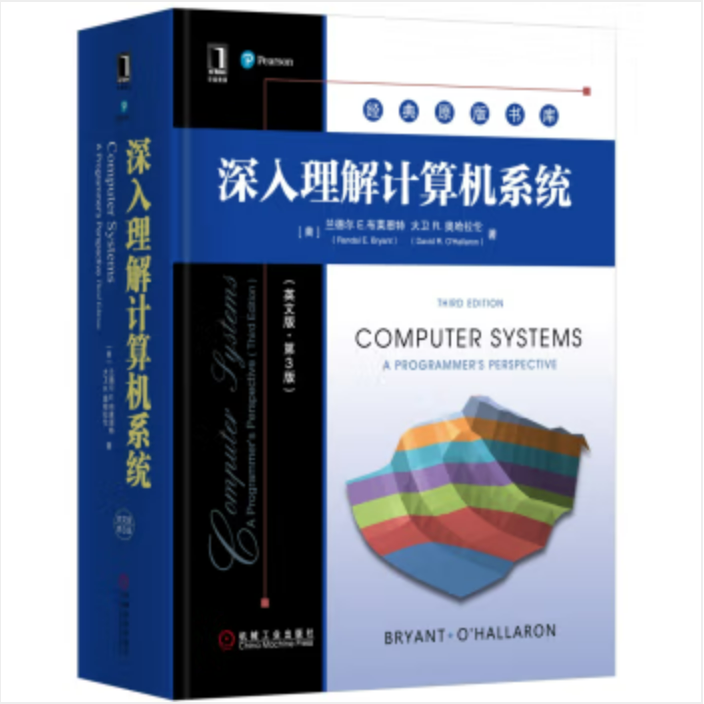链接: https://pan.baidu.com/s/1Qzmz8AvQvBPq-wL0eaGw3g?pwd=ikkw 提取码: ikkw
 出版社: 机械工业出版社
出版社: 机械工业出版社
ISBN:9787111561279
版次:3
商品编码:12155718
品牌:机工出版
包装:平装
开本:16开
出版时间:2017-04-01
用纸:胶版纸
页数:1047
正文语种:中文,英文
编辑推荐
英文原版,原汁原味。影印版采用双色精装印制工艺,提供更加良好的阅读体验
【注:根据原出版社要求,影印版删去了参考文献部分。】
内容简介
本书是一本将计算机软件和硬件理论结合讲述的经典教材,内容涵盖计算机导论、体系结构和处理器设计等多门课程。本书*大的特点是为程序员描述计算机系统的实现细节,通过描述程序是如何映射到系统上,以及程序是如何执行的,使读者更好地理解程序的行为,找到程序效率低下的原因。
和第2版相比,本版内容上*大的变化是,从以IA32和x86-64为基础转变为完全以x86-64为基础。主要更新如下:
· 基于x86-64,大量地重写代码,首次介绍对处理浮点数据的程序的机器级支持。
· 处理器体系结构修改为支持64位字和操作的设计。
· 引入更多的功能单元和更复杂的控制逻辑,使基于程序数据流表示的程序性能模型预测更加可靠。
· 扩充关于用GOT和PLT创建与位置无关代码的讨论,描述了更加强大的链接技术(比如库打桩)。
· 增加了对信号处理程序更细致的描述,包括异步信号安全的函数等。
· 采用*新函数,更新了与协议无关和线程安全的网络编程。
【特别说明:原出版社授权影印版权时,明确规定不能加参考文献和索引,前言及目录也要翻译为中文,因此本书影印版与原书仍然有所不同】
作者简介
Randal E. Bryant,1981年于麻省理工学院获得计算机博士学位,1984年至今任教于卡内基-梅隆大学。现任卡内基-梅隆大学计算机科学学院院长、教授,同时还受邀任教于电子和计算机工程系。他从事本科生和研究生计算机系统方面课程的教学近40年,和O’Hallaron教授一起在卡内基-梅隆大学开设了15-213课程“计算机系统导论”,那便是本书的基础。他还是ACM院士、IEEE院士、美国国家工程院院士和美国人文与科学研究院院士。其研究成果被Intel、IBM、Fujitsu和Microsoft等主要计算机制造商使用,他还因研究获得过Semiconductor Research Corporation、ACM、IEEE颁发的多项大奖。
David R. O’Hallaron,卡内基-梅隆大学电子和计算机工程系教授。在弗吉尼亚大学获得计算机科学的博士学位,2007年-2010年为Intel匹兹堡实验室主任。他教授本科生和研究生的计算机系统方面的课程已有20余年,并和Bryant教授一起教授“计算机系统导论”课程。曾获得卡内基-梅隆大学计算机学院颁发的Herbert Simon杰出教学奖。他主要从事计算机系统领域的研究,与Quake项目成员一起获得过高性能计算领域中的*高国际奖项——Gordon Bell奖。他目前的工作重点是研究自动分级(autograding)概念,即评价其他程序质量的程序。
目录
Preface xix About the Authors xxxv
1 A Tour of Computer Systems 1
1.1 Information Is Bits + Context 3
1.2 Programs Are Translated by Other Programs into Different Forms 4
1.3 It Pays to Understand How Compilation Systems Work 6
1.4 Processors Read and Interpret Instructions Stored in Memory 7
1.5 Caches Matter 11
1.6 Storage Devices Form a Hierarchy 14
1.7 The Operating System Manages the Hardware 14
1.8 Systems Communicate with Other Systems Using Networks 19
1.9 Important Themes 22
1.10 Summary 27 Bibliographic Notes 28 Solutions to Practice Problems 28
Part I Program Structure and Execution
2 Representing and Manipulating Information 31
2.1 Information Storage 34
2.2 Integer Representations 59
2.3 Integer Arithmetic 84
2.4 Floating Point 108
2.5 Summary 126
Bibliographic Notes 127
Homework Problems 128
Solutions to Practice Problems 143
3 Machine-Level Representation of Programs 163
3.1 A Historical Perspective 166
3.2 Program Encodings 169
3.3 Data Formats 177
3.4 Accessing Information 179
3.5 Arithmetic and Logical Operations 191
3.6 Control 200
3.7 Procedures 238
3.8 Array Allocation and Access 255
3.9 Heterogeneous Data Structures 265
3.10 Combining Control and Data in Machine-Level Programs 276
3.11 Floating-Point Code 293
3.12 Summary 309
Bibliographic Notes 310
Homework Problems 311
Solutions to Practice Problems 325
4 Processor Architecture 351
4.1 The Y86-64 Instruction Set Architecture 355
4.2 Logic Design and the Hardware Control Language HCL 372
4.3 Sequential Y86-64 Implementations 384
4.4 General Principles of Pipelining 412
4.5 Pipelined Y86-64 Implementations 421
4.6 Summary 470
4.6.1 Y86-64 Simulators 472
Bibliographic Notes 473
Homework P

